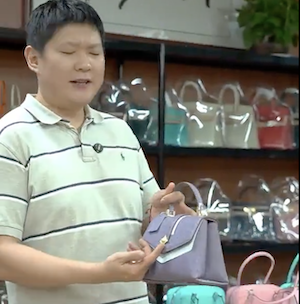China is making a strategic pushback, leveraging its manufacturing dominance to challenge U.S. tariffs’ effectiveness, on Chinese TikTok, where videos expose the manufacturing processes behind luxury American and Western brands.
These videos, fueled by claims that China has legalized counterfeit production in retaliation to U.S. tariffs, highlight factories producing high-quality goods—often identical to branded items but sold without logos at a fraction of the cost. This phenomenon underscores a broader narrative in the escalating economic conflict, revealing tensions over intellectual property, trade imbalances, and consumer perceptions.
Recent U.S. tariffs, reaching up to 145% on Chinese imports, aim to curb trade deficits and protect domestic industries. China’s counter-tariffs, hitting 125% on U.S. goods, signal a tit-for-tat escalation. Amid this, Chinese TikTok creators are showcasing factories that produce goods for global luxury brands, emphasizing that the same materials and craftsmanship yield “unbranded” versions sold directly for far less. For example, a bag retailing for thousands in the West might cost $20-$50 without the logo, challenging the value of brand premiums. These videos don’t just expose manufacturing—they encourage consumers to bypass Western markups, framing it as a defiant response to U.S. economic policies.
This tactic raises questions about intellectual property enforcement and the ethics of counterfeiting, though the “no-logo” angle they are pushing in public skirts outright trademark violation. It also highlights a paradox: many luxury goods rely on Chinese manufacturing, yet brands charge exorbitant prices for perceived exclusivity.
By revealing this, Chinese creators weaponize transparency, aiming to undercut Western markets and erode brand mystique. By promoting its manufacturing to highlight its role in producing premium goods, revealing that Western brand value often hinges on perception, not quality. By showcasing identical unbranded items, China undermines the exclusivity narrative, aiming to shift consumer preference toward its markets and bolster economic self-reliance.
China TikTok is so messy rn Because now that the Chinese government legalize Counterfeit products of all American goods because of the tariffs their now exposing a lot of Big brands and how their stuff is manufactured and encourages you to buy them in House China for cheaper pic.twitter.com/GLftzEnF3y
— Klair-O-Spinach ( Saint Era) (@ClairoSpinach) April 12, 2025
